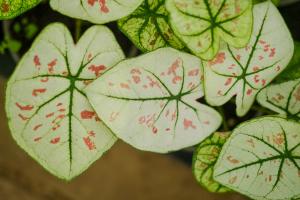Where to Plant Elephant Ear Bulbs
Elephant ear bulbs, also known as colocasia, are tropical plants that grow from underground bulbs. These plants are known for their large, splayed leaves that resemble the ears of an elephant. If you are interested in planting elephant ear bulbs, it is important to choose the right location based on their specific needs. In this article, we will discuss where to plant elephant ear bulbs for optimal growth and health.
Location
The first thing to consider when planting elephant ear bulbs is the location. These plants thrive in tropical environments with warm weather and high humidity. They require plenty of space to spread out and grow. A location that receives partial shade is ideal for elephant ear bulbs. They prefer light shade to avoid direct sunlight, especially during the hottest times of the day.
Soil
Elephant ear bulbs require well-draining soil that is rich in organic matter. The soil should be moist but not waterlogged, as this can lead to root rot. If the soil in your chosen location is heavy and dense, it may be necessary to add sand or other materials to improve drainage. Compost or other organic matter can also be added to improve soil quality and provide nutrients for the plant.
Watering
Elephant ear bulbs require regular watering, especially during the growing season. The soil should be kept consistently moist but not waterlogged. If the soil becomes too dry, the leaves will begin to wilt and the plant may die. Overwatering should also be avoided, as this can lead to root rot. A good rule of thumb is to water the plant deeply once or twice a week, depending on rainfall and temperature.
Fertilizer
To promote healthy growth and development, elephant ear bulbs require regular fertilization. A balanced fertilizer with equal parts of nitrogen, phosphorus, and potassium is ideal for elephant ear bulbs. Fertilizer should be applied every four to six weeks during the growing season. Be careful not to over-fertilize, as this can lead to burns on the leaves and stems.
Conclusion
In conclusion, planting elephant ear bulbs requires a specific set of conditions that must be taken into account. The plant requires partial shade, well-draining soil, regular watering, and regular fertilization for optimal growth and health. If you plan to plant elephant ear bulbs, choose a location that meets these requirements and be prepared to provide the necessary care to promote healthy and beautiful growth.

 how many times do yo...
how many times do yo... how many planted tre...
how many planted tre... how many pine trees ...
how many pine trees ... how many pecan trees...
how many pecan trees... how many plants comp...
how many plants comp... how many plants can ...
how many plants can ... how many plants and ...
how many plants and ... how many pepper plan...
how many pepper plan...































